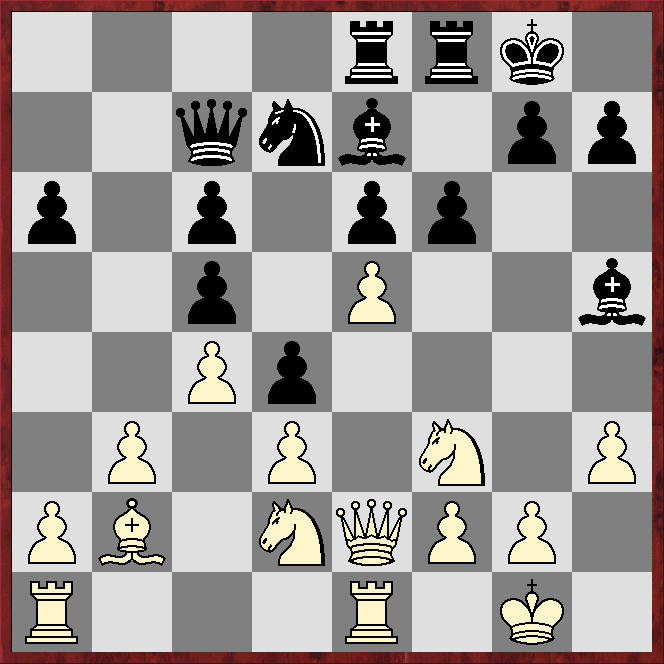That arises from the moves 1.e4 c5 2.Nf3 Nc6 3.Bb5, and in the game my opponent played the unusual 3...a6!?, strongly inviting the aforementioned battle.
After the further moves 4.Bxc6 bxc6 5.d3 d5!? (marginally more popular in ChessBase's 2025 Mega database is 5...d6) 6.0-0 Black continued active play with 6...Bg4.
*****
*****
*****
*****
As I understand it, White's plan is to keep lines closed, and in particular to fix the central pawn-structure with a long-term view of exploiting the weakness of Black's queenside formation.
Black's plan, again as I understand it, is to remain flexible, looking for ways to exploit the striking power of the bishops.
Stockfish17 and Dragon1 reckon White in the diagram has the upper hand.
The game continued 7.Nbd2 e6 8.Re1 Nf6 9.b3 Be7 10.Bb2 0-0.
*****
*****
*****
*****
Two games reach this position in Mega25. A 2337 played 11.h3, which is the engines' top choice, and a 2181 chose 11.Nf1, which is the engines' second choice.
I preferred 11.c4?!, which in this specific position may be a mistake.
Often the move c4 is good in this structure as it helps fix the centre, but here what may be of more importance is that it takes the c4 square away from a white knight, which would be excellently placed on c4 in the event of Black grabbing space in the centre with ...d4.
The game saw 11...Nd7, which may be better than immediately pushing on.
The engines reckon White should reply 12.cxd5!? cxd5 13.exd5 exd5 14.d4, which dissolves the doubled pawns and opens lines, but to a certain extent fixes the centre, giving equal chances, according to the engines.
Instead the game continued 12.Qc2?! d4!, which closes the centre but gains space, and, as Black correctly reasons, it will be a relatively simple matter to open lines by pushing the f7 pawn.
After 13.e5 Qc7 14.h3 Bh5 15.Qd1?! (the engines suggest 15.Re4) Rae8 16.Qe2 Black was ready to play 16...f6.
*****
*****
*****
*****
The game went 17.g4 Bf7!? (17...Bg6 may be stronger) 18.Rad1 fxe5 19.Nxe5 Nxe5 20.Qxe5 Bd6 21.Qe2 Bg6, after which Black's active bishops, extra space in the centre and safer king give an advantage, although not as big a one as would be the case if the light-square bishop had gone straight to g6.
The engines reckon a slightly better approach from the diagram is 17.exf6 Rxf6 18.Rf1, but again lines have been opened, and Black's advantages in the centre and on the kingside massively outweigh White's potential on the queenside.
LESSON: imbalanced positions, such as the one in the first diagram, put a premium on understanding one's strengths, and playing to them, while understanding the opponent's weaknesses, and playing against them.



No comments:
Post a Comment